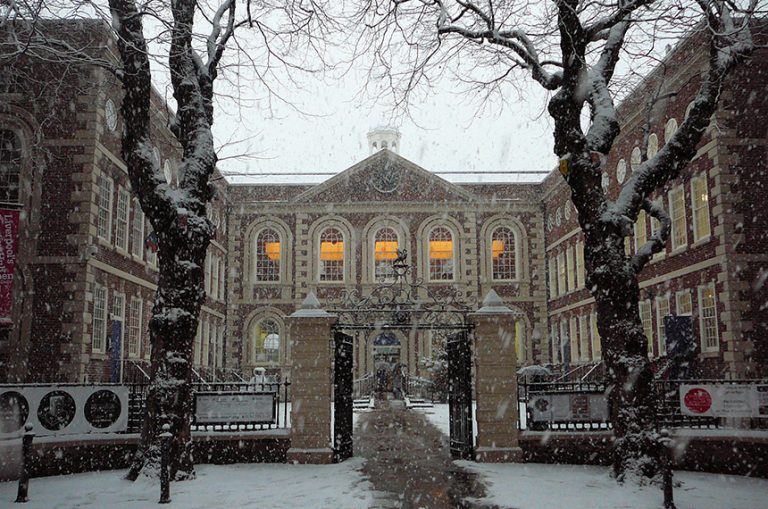Liverpool History: The City’s Hidden Underground World

Liverpool History: The City’s Hidden Underground World
Think about the last time you walked through Liverpool city centre. Did you know that the whole time, an incredible old dock, a network of tunnels and a creek from which Liverpool gets its name lay beneath your feet?
Underneath the streets of this wonderful city is a huge network of archaic tunnels, Docklands and poignant historical DNA. Explore the mysteries of Liverpool’s history with Signature’s Liverpool and read on to discover more!
The Old Dock
Originally known as Thomas Steers’ dock, Liverpool’s Old Dock was the world’s first commercial wet dock. Building started in 1710 and was completed in 1716. The creek on which this dock was built was a rare natural tidal pool that came in from the Mersey. In 2001, it was discovered during excavations and was unearthed again for the first time since 1826. The area was completely safeguarded, and then a portion of the old dock was made public so that locals and tourists alike could remember and celebrate Liverpool’s rich historic status.

In the early 19th century, the Old Dock was deemed too small for the ever-growing size of shipping using the port. The quays were too narrow, the city’s sewage polluted the dock’s water and the narrow wooden drawbridge across its entrance channel caused traffic jams which proved very inconvenient for the bustling fast-paced nature of the shipping industry. The only thing that saved the Old Dock for 20 years was the sentimentality that locals had for this significant Liverpool landmark, but it eventually closed and was filled in on 31 August 1826.
Free tours of Liverpool’s innovative Old Dock are available to the public and can be booked through the Merseyside Maritime Museum. On the tour, the Maritime Museum says that “visitors are taken back in time as they see a large portion of the Old Dock rising more than 20 feet from the bed of the Pool which is clearly visible. The impressive walls are made from hand-made bricks.”
The tour boasts a modern bridge and walkways which allow you a unique view of the Old Dock. There’s an ancient, bricked-up tunnel set within the dock wall which is believed to be hundreds of years older than the Old Dock, and even may have linked Liverpool Castle with ‘the Pool’ – the creek which gave Liverpool its name! If that interests you, then you can also read about how other places in Liverpool got their names.
Williamson Tunnels
This series of vast underground tunnels in Edge Hill was created under the orders of tobacco merchant, landowner and philanthropist Joseph Williamson between 1810 and 1840. Although we have described them as “tunnels”, most of this site comprises of brick or stone over excavations in the underlying sandstone.

The purpose of these excavations remains unclear, although the options of quarrying, a philanthropic desire to provide employment and Williamson’s own unconventional interests have all been recommended. The Williamson Tunnels Heritage Centre provides a fascinating insight into the secret underground world underneath Liverpool. You can even take a guided tour through part of the large labyrinth of tunnels or cast your eyes upon exhibitions which detail the life and times of when these excavations were in use!
World’s First Pioneering Rail Infrastructure

Did you know that Liverpool was a pioneer in railways? We had the earliest cases of the world’s first advanced rail infrastructure found in the city! Our underground network of rail tunnels pre-date any that are found in London or New York.
Crown Street Stephenson Tunnel
Built by George Stephenson, this tunnel was built in 1829. The single-track tunnel measures at 291 yards long and ran to Crown Street Station. This tunnel is the oldest rail tunnel in the world that runs under streets! It’s also the second oldest rail tunnel in the world. It was dug at Edge Hill junction all the way to Crown Street to play host to the world’s first passenger rail station.

Unfortunately, this passenger station was abandoned in 1836 as it was too far from the city centre. Lime Street replaced Crown Street, and the station was converted for freight use.
Wapping Tunnel
Otherwise known as Edge Hill tunnel, this 1.26-mile-long channel is the first rail tunnel in the world that was bored underneath a metropolis. It’s been disused since 1972 and is the second oldest tunnel under streets in the world! The first was the aforementioned Crown Street tunnel. It’s still in great condition and Merseyrail has considered it for reuse.

The tunnel runs from Edge Hill junction to the Liverpool south end docks. Like the Crown Street tunnel, it was designed by George Stephenson, with the intention of creating a route on which goods services could operate between Liverpool docks and all locations right up to Manchester.
Waterloo & Victoria Tunnels
The Waterloo tunnel is a former railway tunnel that was constructed in 1849. It is 779 meters long, with its western end located underneath Pall Mall. From this point, the tunnel continued underneath Great Howard Street to the Waterloo Goods railway station – what is now known as the site of the Kingsway Tunnel Ventilation Shaft. After 1895, the Waterloo tunnel continued to the dock railway system and then onto Liverpool Riverside at Pier Head where it provided a direct connection to passenger liners. The eastern end of the Waterloo tunnel opens between Byrom Street and Fontenoy Street – connecting to the Victoria Tunnel which comes out at Edge Hill train station.

Running a length of 1.537 miles, the Grade II listed Victoria Tunnel, although named differently, actually forms part of the Waterloo Tunnel. However, back in the day, these tunnels operated very differently when it came to the way the trains in each tunnel were hauled. Victoria Tunnel trains were cable hauled, and Waterloo Tunnel trains locomotive. In 1972, these tunnels were closed but Merseyrail continues to safeguard them for potential future use.
Humble Beginnings to Industrial Pioneers
After evolving from a small fishing village on the tidal banks of the Mersey into one of the great pioneers of rail infrastructure, our city of Liverpool is full of history, parts of which even some locals aren’t familiar with!
Why not head on a tour around the Old Dock or delve into the history behind the Williamson Tunnels? There is so much to discover when it comes to Merseyside’s hidden history, for locals and visitors alike.
If you’re curious to learn more about the history of Liverpool, then have a look at the weird and wonderful history behind the city’s street names!


